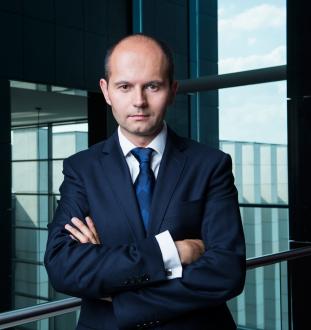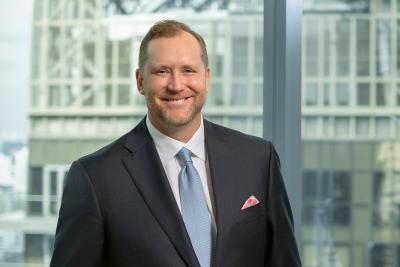Comarch’s Head of Consulting on Vietnam and the Journey to Customer-Centricity in Asia’s Wealth Management Markets

Grzegorz Prosowicz of Comarch Capital Markets
Dec 14, 2022
Grzegorz Prosowicz (PhD), Head of Consulting and Product Management at Comarch Capital Markets, gave a presentation on personalisation in practice at the Hubbis Vietnam Wealth Management Forum in ho Chi Minh on November 9. He told delegates how in the private banking and wealth management world of today and tomorrow, personalisation is increasingly important in helping to create value and drive customer loyalty. We have summarised some of his comments in this short report.
Grzegorz opened by explaining that the topic of his presentation was ‘Lessons Learned’, and that one of the realities he had learned in the days of easy and widespread pre-pandemic travel was that the differentiation between airlines was not so much the destination but the quality of the journey.
“Similarly,” he observed, “I think the banking products are the commodity, and the real difference is how you deliver those to the right clients at the right time and in the right ways.”
Democratising wealth management
Grzegorz said that, generally, to date in private banking, the higher the client’s AUM, the higher their status and the more extensive the coverage by the banks. “That is the very traditional way of customer segmentation still in banking,” he explained.
But he said that approach is evolving as digitisation brings wealth management to a broader range of clients, allowing more such clients to enjoy the journey. “We think that banks are really privileged to deliver their services in different ways, and this is because of various touchpoints they have with their clients on a daily basis, with various payments, card transactions, investments, and so forth. They build knowledge from all that, and they can then leverage that to build a wider ecosystem that brings more benefits to all of the customers.”
From product selling to client centricity
He explained that in wealth management, some might say the real interaction with wealthy clients happens only once or twice a year when the client is really taking an investment decision, but in fact, it is not only about the transaction; it is about the whole journey.
“Someone once said that even if your client buys clothes once or twice a year, he wears clothes every day,” he commented. “And that helps us develop a new way of thinking about customer experience. It is not only about money; it is all about the relationship, behaviour and feedback. And that is why leading brands such as Amazon or Netflix convert all these interactions to deliver personalisation.”
Delivering personalisation
Armed with his excellent slide show and video presentation, Grzegorz then talked delegates through various steps and various touchpoints that will help deliver clients the right kinds of personalised experiences.
“Personalisation is truly central to what we are helping clients deliver,” he reported. “But what kind of personalisation can and do customers expect? We think it's based on three important elements, and these are values, expertise and benefits. Customer centricity requires personalisation, which is really engaging, unique, proactive, and that covers the whole journey of the client. And the objective is very simple – to delight the customers.”
Trust and engagement
He elaborated on these comments, noting that the banks and wealth management firms can thereby deliver what he termed a ‘kind of soft proactivity’ that really builds trust and engagement of the clients.
“This is all about respecting customer values and interests, and is a new kind of KYC, resulting in delivering expertise, relevance, better products, improved offers, and therefore enhanced value. And rewarding client engagement and loyalty with benefits is very important because customers simply expect this and deserve this.”
The magic triangle
He also pondered what is behind this kind of customer-centricity, answering his own question by stating that this is what they call the magic triangle of competencies, which is there to help to support and achieve customer-centricity.
“The valuable insights, actions, and then advice your client receives should be based on two pillars, namely the customer’s financial health and also their behavioural profile,” he elucidated. “And this behavioural aspect needs to take into account not only their financial situation, risk profile, their age or gender, but also focus on specifics like preferences, objectives, investment history, transaction history and so forth. The ultimate goal is to truly understand the customer, aligned with his or her preferences and then simply exceed expectations.”
Leveraging the data
He added that it is then vital to deliver products and ideas at the right time and adapt by providing relevant and UpToDate insights, helping clients, for example, with shifts in the portfolios.
“To achieve these goals, you must learn from years of data, by using market intelligence, supporting your expertise with machine learning and AI,” he told delegates. “Why is this all so important? Because you are there to help clients. Your advisors are there to help guide them to making informed and efficient investment decisions.”
Reaping the benefits
He then focused on some of the benefits that will naturally emerge from these processes and approaches. But these are not rewards as with airlines or other businesses, they are better outcomes for the clients.
“The rewards of wealth management should be different, the benefits are simpler and better choices for the clients, and customer satisfaction for both the banks and the customers,” he concluded.
Keeping it all as simple as possible
As to the next phases of this journey, he said that based on what was happening in Europe, the Comarch home market, the next step is even greater simplification. “The next stage of personalisation in wealth management is actually about limiting the choices your customers have but still giving them enough freedom to make the right decisions,” he explained.
He said personalisation is becoming more about helping people choose for reasons which really matter, not for various reasons which might have been given to them. And that really makes the difference because in the complex world of investments, the more choice you have, the fewer decisions you might take, and the more regretful you might be about decisions not taken.
Micro-segmentation
“Ultimately,” he said, “the goal is customer satisfaction, which translates to customer loyalty. So there are some major benefits like reduced churn, improved customer lifetime value, higher conversion, all of which are achievable with greater personalisation, micro-segmentation and the resultant improved targeting.”
From ‘old’ to ‘new’ wealth management
Grzegorz concluded his excellent presentation by stating that the evolution taking place is from the old to the new ways of thinking in wealth management.
“By truly understanding the clients, you can deliver insights they can't obtain on their own, you provide more or better opportunities to engage, and you deliver genuine client centricity, centred on making their choices simpler, offering greater relevance, and thereby improving customer loyalty.”

Head of Consulting and Product Management at Comarch Capital Markets

More from Grzegorz Prosowicz, Comarch Capital Markets
Latest Articles






